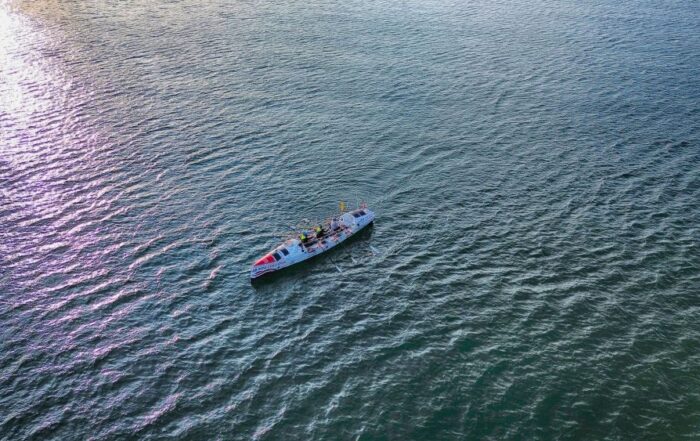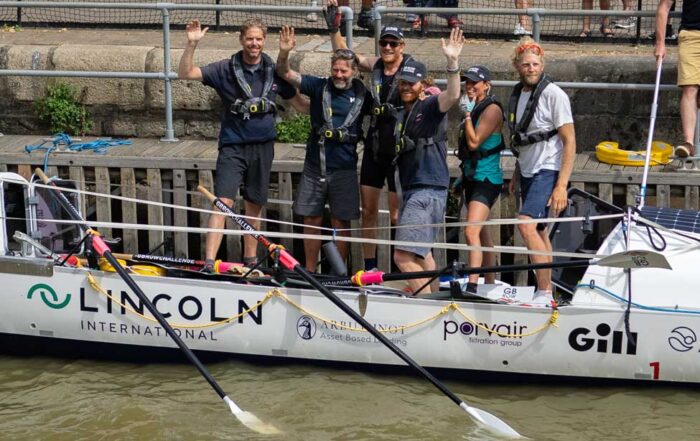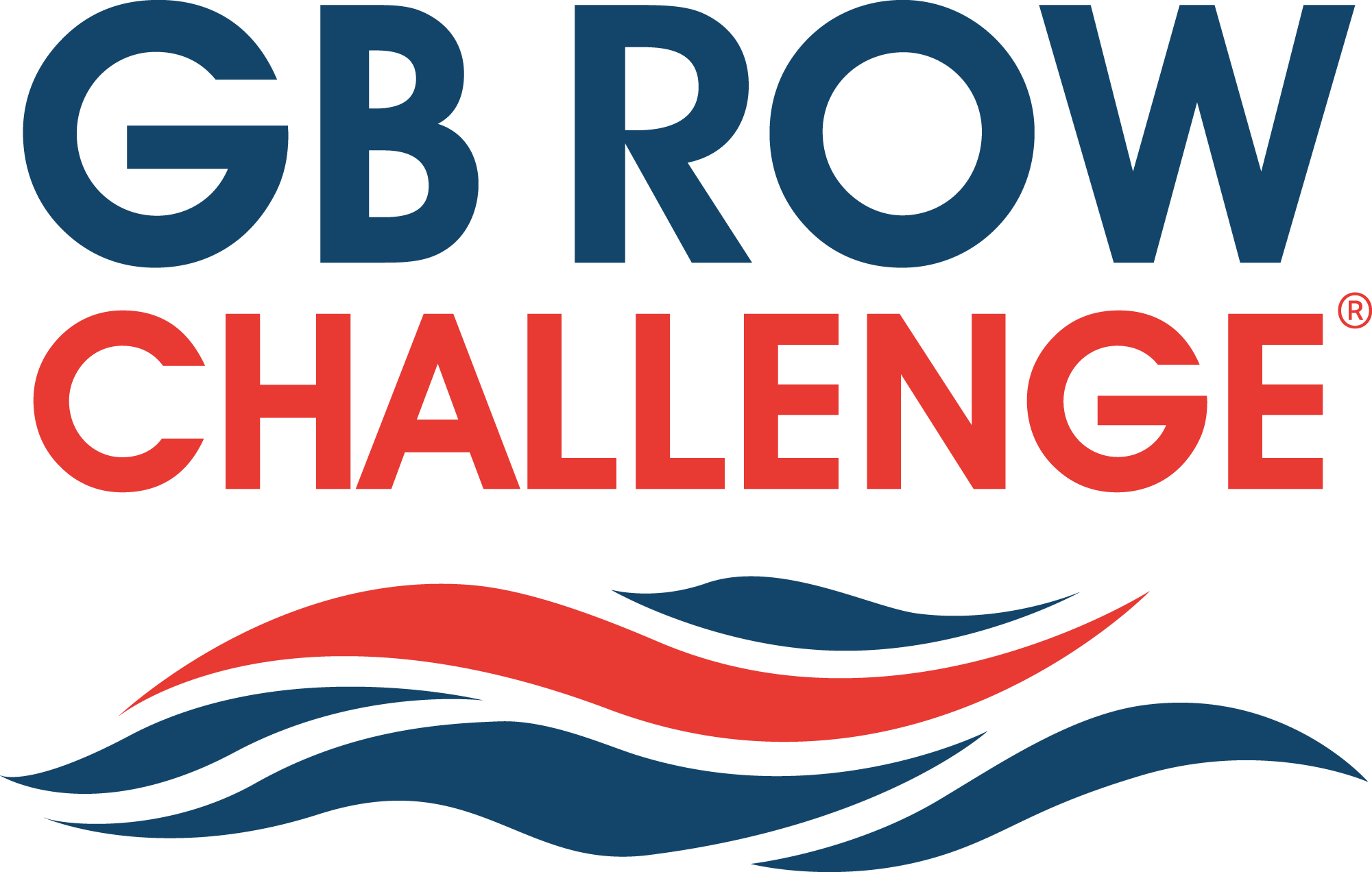Coastal Odyssey
On Sunday, 14 July, at around 10pm, a weather window opened up, allowing the team to move out of their anchorage at Peedie Sands in Dunnet Bay and head out to round Dunnet Head to navigate the Pentland Firth (see below chart). This 8-mile stretch of water separates the Orkney Islands from Caithness on the northern Scottish mainland. The Firth is well known for the strength of its tidal currents, which are among the fastest in the world, with currents moving at up to 5 metres per second (the fastest recorded speed is 16 knots to the west of Pentland Skerries). The force of the tides gives rise to overfalls and tidal races, which can occur at different stages of the tide. If combined with strong winds, they give rise to extraordinarily violent sea conditions. It is quite simply one of the most dangerous stretches of water found anywhere in the world and therefore should only be attempted when conditions are at their very best.
At around 3am on Monday morning, the team successfully rounded Duncansby Head and finally started heading south. Seeing the boat’s wind vane pointing in a favourable direction for the first time in four weeks, the team could only assume it must be broken! It wasn’t, and with a favourable wind and unusually smooth sea conditions, they made short work of crossing the Moray Firth. Early Tuesday morning, they rounded the headland to take on the Firth of Forth. However, with the wind picking up again, they were forced to hug the coastline once more as they passed close by the busy ports of Fraserburgh, Peterhead, and Aberdeen. After a brief period at anchor off Arbroath, the winds dropped enough to allow a course to be set to pass the Fife Ness headland and on towards Eyemouth. At 3:30am on Thursday morning, the graveyard shift was lucky enough to have several Minke whales stay with the boat for around 30 minutes.
They have now passed Berwick-on-Tweed, bidding farewell to the beautiful landscapes of Scotland. Entering England, they are now heading home!
Sea Change
The team are busy visiting, collaborating with, and telling the stories of coastal conservation and restoration projects along Great Britain’s coastline. They’ve recently headed out on paddleboards in the Northeast of Scotland to collect water samples to assess eDNA data, which will help to map the health and biodiversity of British coastal waters. And they also took part in a beach clean at Cruden Bay beach. Follow their social channels to learn more.
Image above shows Coastal Odyssey
Previous updates:
14 July 202408 July 2024
01 July 2024
27 June 2024
23 June 2024
18 June 2024
13 June 2024
Follow these Instagram accounts for more images and videos from us and the teams:
GB Row Challenge / Sea Change / Coastal Odyssey
Share This Story, Choose Your Platform!
Recent Posts
Study reveals how much UK seas have warmed in a year
UK seas were, on average, 0.39°C warmer in 2023 compared to 2022, a report by the University of Portsmouth and GB Row Challenge has found. Some regions, including the Celtic and Irish Seas and the northern North [...]
How Extreme Rowing Challenge Is Tackling Ocean Pollution
Tackling ocean pollution is one of the biggest environmental challenges of our time. Extreme rowing challenges are now playing a vital role in tackling ocean polluting by gathering valuable data, raising awareness, and inspiring action. [...]







